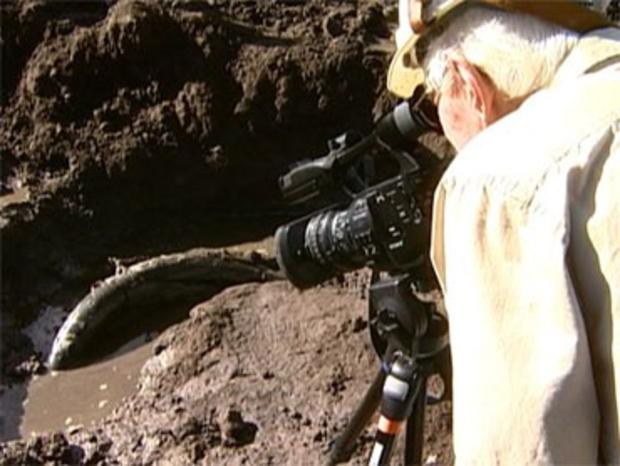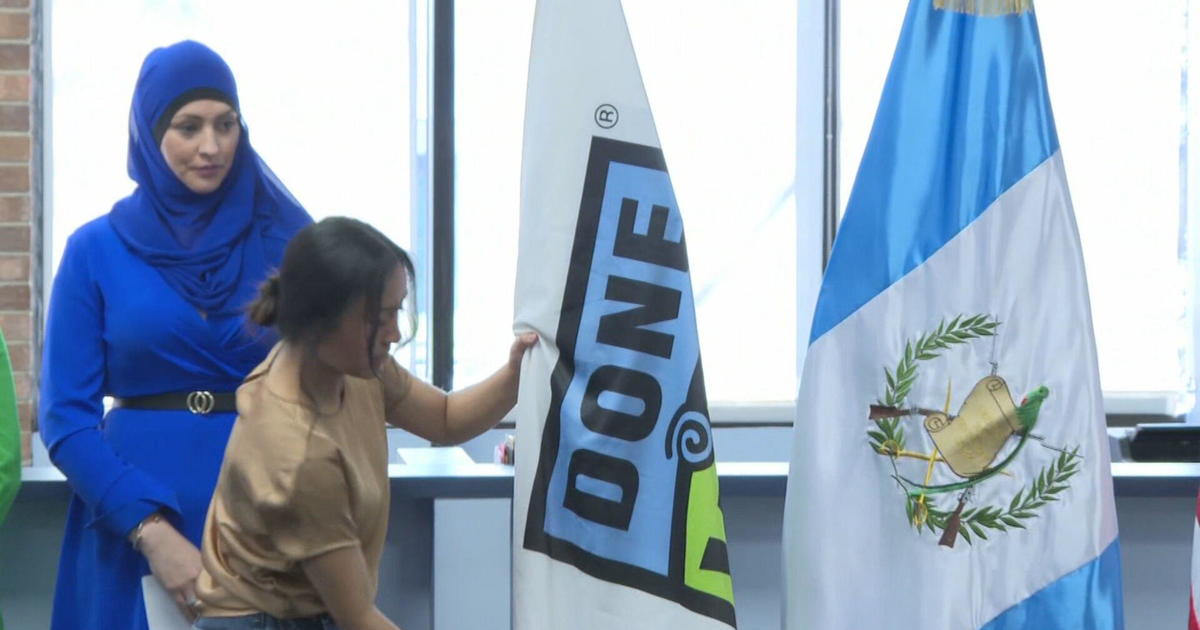Denver Museum Hopes For More Fossil Discoveries Near Snowmass
DENVER (CBS4)- Scientists at the Denver Museum of Nature and Science are preparing to return to Snowmass Village and the Ziegler Reservoir on May 15.
They pulled 600 Ice Age bones from the site during an 18-day dig in October and November, calling the Ziegler Find one of the most significant in Colorado.
The find included eight to 10 mastodons, four mammoths, four bison and the first Jefferson's ground sloth ever found in the state. But the scientists also found tiny salamander bones and plants from the Ice Age.
But it all started with the keen eye of bulldozer driver Jesse Steele.
"I was pushing the peet moss, kind of watching and all of the sudden a couple of rib bones came up in the dozer blade," said Steele.
The discovery of those first bones sent the museum scientists scurrying up the mountains to a scene they could have only imagined.
"Multiple mammoths are pretty rare so we went up to the site," said paleontologist Kirk Johnson. "It was a beautiful, sunny day and while we were standing there, the bulldozer drove by and pronged up with big leg bone. We started digging with our hands and we're finding tusks, pieces of logs and wood and more bone. We dug until the sun went down."
It was an adventure three scientists shared together.
"We're in dress shirts, ties, pants, the nine yards, our nice shoes," paleontologist Ian Miller recalled. " We jump right in. It's incredible."
Archaeologist Steve Holen took charge of the original find, quartering it off so it could be carefully screened and preserved.
"We're going to use archeological techniques to do a lot of screening of the sediments up in the peet bed and other locations," Holen explained, "to see what we might find associated with the mammoths and mastodons."
When they return in the spring for a dig that's scheduled to last six weeks they will be looking to see if any human artifacts are found in the Ziegler Reservoir. That would offer new clues about human interaction with the Ice Age animals.
The reservoir was being dug to provide a water source to Snowmass Village.
The scientists say it served a similar purpose in the Ice Age when it was a lake. "All animals would have come from surrounding areas to drink at this place," Holen said. "Some of them obviously died here."
The site is believed to be between 150,000 to 50,000 years old and that it was covered in ice at two separate times. And it is a site filled with potential because of it's elevation, diversity of fossils, preservation, the same of time between the fossils and the era itself.
"It's not a period of time we know particularly well," said Johnson.
The Ziegler site could also offer clues about why those giant prehistoric beasts moved to higher altitudes. Scientists say it is possible as temperatures rose around the world, the site was a refuge for the animals being squeezed out of their environment.
Finding out what happened eons ago could help answer questions in the current debate about global warming.
"The better you understand historical contest whether it's your own personal life or your family's history or your country's history, the better you understand the context and the timing, the better you understand what trends mean," Johnson said.
While the scientists wait to return to the dig site, an incredible amount of work has gone on at the Denver Museum of Nature and Science to preserve and understand what's already been discovered.
The museum says the Ziegler project fits with its mission exactly. "Snowmass is almost a picture perfect example of what a museum does," Johnson said. "(It) makes discoveries, preserves the results and communicates the results to the public."
It will take some time to get all of the fossils preserved well enough to go on display at the museum. For now, a small cart with some of the fossils including teeth is on display on the second floor of the museum. Those pieces are sturdy enough to actually allow visitors to touch them.
The museum hopes the discovery will inspire its youngest visitors.
"Those fossils are part of the heritage of Colorado," Johnson said. "If we can do a better job of taking care of them, we'll be a better place for inspiring kids to become scientists and for adults to understand science."
Additional Resources
Link: Denver Museum of Nature & Science
- Written by CBS4 reporter Stan Bush and producer Raetta Holdman





